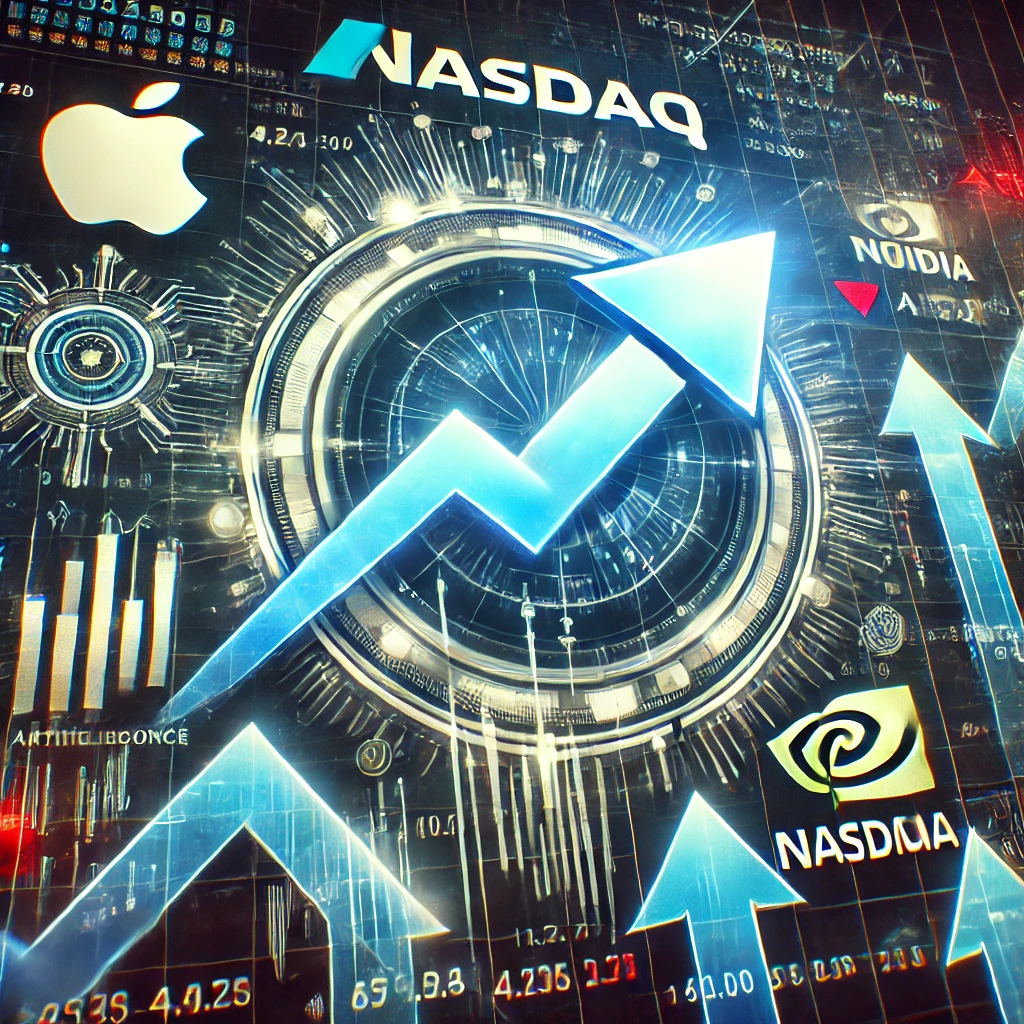Nasdaq’s Wild Ride: How the Market Reversed Course in One Day
The Nasdaq market is known for its volatility, but few days have showcased such a dramatic turnaround as the one we witnessed recently. After a somewhat pessimistic outlook following the FOMC meeting, the tech-heavy index surged nearly 3% by the day’s end. What caused this abrupt change? This blog delves into the significant factors driving Nasdaq’s rebound and provides insights into what investors might expect moving forward.

The FOMC’s Role in Shifting Market Sentiment
The Federal Open Market Committee (FOMC) meeting played a central role in driving the Nasdaq’s movement. The FOMC announced a 50 basis point (bp) interest rate cut, a considerable drop compared to the typical 25 bp adjustments. While the rate cut itself was welcomed by the market, Fed Chair Jerome Powell’s press conference raised concerns. His cautious remarks suggested future rate cuts might not follow the same pace, which initially dampened investor enthusiasm. As the dust settled, however, market participants began reassessing the core outcome: a significant rate cut in an economy still showing resilience.
Re-evaluating Powell’s Remarks
During the FOMC press conference, Powell’s language hinted at uncertainty, leaving the market unsure about future rate cuts. He suggested that the Federal Reserve might slow down its rate cuts in the future, raising concerns about prolonged tight monetary policy. However, investors eventually recognized that the immediate 50 bp cut was a strong, positive signal for the market, indicating a response to economic challenges rather than a knee-jerk reaction to a pending recession. As a result, optimism took hold in the following hours, driving the surge.
Economic Data Eases Recession Fears
Nasdaq’s rally was further fueled by favorable economic data released shortly after the FOMC meeting. The U.S. retail sales report exceeded expectations, revealing robust consumer spending, a crucial indicator of economic health in a consumer-driven economy like the U.S. Additionally, the Philadelphia Fed’s manufacturing index showed an unexpected increase, suggesting that the industrial sector remained stable. This data calmed concerns about an imminent recession, helping push the Nasdaq higher.
Another encouraging indicator was the low number of new jobless claims, signaling that the labor market remained resilient despite ongoing inflation concerns. These economic reports bolstered investor confidence, reinforcing the belief that the U.S. economy was not heading toward a downturn, at least not in the immediate future.
The Role of Big Tech and AI in Nasdaq’s Surge
In addition to macroeconomic factors, individual tech stocks played a critical role in the Nasdaq’s rise. Companies like Nvidia and AI-focused firms saw increased interest as investors looked ahead to the potential for long-term growth in artificial intelligence technologies. Analysts projected significant investments in AI, predicting that these advancements could drive a trillion-dollar wave of capital into the market over the next decade.
One prominent analyst, J. Den Ives, further fueled the optimism by claiming that the “party” was just getting started for AI and big tech stocks. His comments, along with positive sentiment around tech sector earnings, helped lift major tech firms, contributing significantly to the Nasdaq’s overall performance.
Breaking Through Technical Barriers
Nasdaq’s sudden rally also had a technical component. Analysts noted that the index broke through key resistance levels, often referred to as a “channel” in market terms. This breakout led to a cascade of stop-loss orders being triggered for traders who had shorted the market, causing a sharp spike as these positions were unwound.
As the market pushed higher, it became clear that investors were discounting Powell’s cautious tone and focusing on the larger picture: a significant rate cut and strong economic data. This technical momentum amplified the market’s upward movement.
The Market Reaction to Apple and T-Mobile
One area of concern for the market had been Apple. A notable analyst, known for accurately predicting iPhone demand, had raised red flags about weaker-than-expected sales for the upcoming iPhone 16. This news had previously weighed down the tech giant’s stock. However, T-Mobile’s CEO offered a different perspective, claiming that iPhone sales were actually stronger than expected, with consumers opting for higher-end models. This revelation helped to reverse the negative sentiment around Apple, further boosting the Nasdaq.
The Future of the Nasdaq: What Lies Ahead?
While the Nasdaq’s sharp rise came as a surprise, it raises the question: Can this momentum be sustained? There are several factors that will influence the index’s trajectory in the coming weeks.
- Fed Policy: Powell’s cautious tone suggests that future rate cuts may be smaller or more spaced out. This will likely keep market participants on edge.
- Economic Data: Investors will continue to watch key indicators such as retail sales, jobless claims, and manufacturing output for signs of either strength or weakness in the U.S. economy.
- AI and Tech Investments: The trillion-dollar investment wave predicted in AI and tech infrastructure will be a major driver for the Nasdaq, particularly as firms like Nvidia continue to lead the charge.
- Geopolitical Factors: Ongoing global uncertainties, including supply chain issues and geopolitical tensions, may create headwinds for the market, despite positive domestic news.
In conclusion, Nasdaq’s dramatic turnaround demonstrates the market’s capacity for rapid change. While uncertainty remains, a combination of favorable economic data, bullish sentiment around tech stocks, and technical market dynamics all contributed to this surprising outcome.











1 COMMENTS